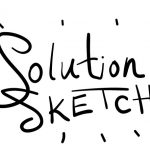Concept development 101 – What are concepts and how do you develop a strong concept?
Concept development 101
At HatRabbits, an important part of what we do is concept development. Over the years, we’ve noticed that few people know the difference between a ‘normal’ idea and a concept, let alone how powerful concepts can be. In this article, I’ll try to answer the question ‘What are concepts and how do you develop a strong concept?’
What is a concept?
To be able to develop a strong concept, it’s important to know the difference between a goal, a concept and an idea.
A goal = what you want to achieve
A concept = what you want to do (to achieve your goal)
An idea = how you want to do that (the way of implementing the concept)
Goal
Your goal is the desired situation. The end result you’re striving for. Once this situation is realised, you’ve reached your goal.
Concept
A concept is a general approach to achieving something. Concepts are broad and not concrete. A concept describes WHAT to do, but not exactly HOW. That’s where ideas come in.
Idea
An idea is a way to carry out a concept. A way to put the somewhat vague concept into practice.
A concept is like an umbrella under which many ideas can be lined up. Many different ideas can be generated to give life to it. This is what makes concepts so powerful; there are many ways to act upon a concept.
At the same time, you can use the concept to assess each and every idea. A concept is a compass. It gives direction. How should we decorate this space? How should we communicate with our target audience? How should we market this project? All questions you can easily answer by looking at your concept.
A powerful concept is inspiring and has the potential to stay relevant for a very long time. Individual ideas often have a short lifespan. After a while, something simply isn’t surprising anymore. A concept, on the other hand, can be reinterpreted time and time again. New ways to carry out the same concept make sure the concept stays fresh.
Guard your concept
It is very important to keep the underlying concept in mind while concrete ideas are being implemented. Make sure that each action is in line with the concept. Actions that don’t fit can easily weaken a concept. Imagine Coolblue for instance. The company is famous for its tagline ‘Anything for a smile’. What if the webshop would set up a complicated procedure for filing a complaint? Or if it would start packaging its products in boring plain boxes? How long would people keep associating the company with its inspiring tagline?
Make sure your concept doesn’t water down. Check for each action if it ‘fits’ the concept.
How do you develop a concept?
Usually, you generate a bunch of good ideas and use these to develop a concept.
If you have a clear goal, it’s easy to quickly generate many ideas. But how do you turn these ideas into one overarching concept?
Step 1. Find the concept behind your idea
Select the most inspiring idea you’ve generated and ask yourself: “What am I trying to do with this idea?” The answer to this question is the concept behind your idea.
Watch out! Be aware that a single idea can harbour many concepts. Write down the different answers to your question and pick the most inspiring concept. Which of the concepts immediately sparks creative ideas?
Example:
Imagine you work for a municipality and you’d like to know the concept behind the idea “We make the mayor drive through the city in a small recognisable car, picking up random citizens along the way. These citizens can share their ideas during the ride.”
What are you trying to do with this idea?
In this case, multiple concepts can be identified. Concepts like:
- We enable citizens to share their ideas for the city
- We are reducing the gap between citizens and the municipality.
- We make the mayor approachable for the “normal” resident.
These are obviously very rough concepts. They aren’t nearly ready to build a campaign around. Before you launch any of these concepts, you’ll have to refine them. You want your concept to speak to the imagination straight away. It helps, for instance, to come up with a short and catchy slogan that emphasises the core of your concept. For more on this, read this previous article.
Step 2. Generate ideas to carry out your concept
Obviously, you already have one idea. After all, that’s what you started with. But a concept can’t survive on a single idea. You’ll have to find other ways to carry out this concept.
To find ideas to carry out your concept, ask yourself ‘HOW can I do this?’
Example:
Imagine you’ve chosen the concept ‘We enable citizens to share their ideas for the city’. In this case, possible answers to the question ‘How can we do this?’ are:
- We place physical suggestion boxes at strategic places throughout the city
- Each civil servant is assigned one ‘voxpop hour’ a week to go into town and collect ideas
- We launch a website on which citizens can share their ideas for the city. Each week, the idea with the most votes will be discussed in the city council.
- At the bottom of our letters and emails, we place a question on a specific topic + an email address to send ideas to.
- We appoint a ‘CPO’ (a chief participation officer) who has to implement at least one resident’s idea each month.
Curious for more?
Obviously, this article is merely a brief introduction on the topic of concept development. Would you like to know more? Or are your curious to know if we can help you with the development of a great concept? Send me an email and let’s discuss the possibilities!






I like this article, very helpful to me
Thank you Fikilio, I’m glad you like the article!